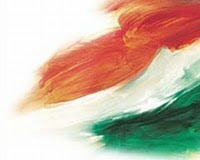Madan Lal Dhingra: Real Hero of India
A great revolutionary from Punjab, Madan Lal Dhingra (1887-1909) went to England in 1906 to pursue higher education in Engineering. In England he came in close contact with the Indian revolutionary leaders like Shyamji Krishna Varma and VD Savarkar. He was also associated with the Indian Home Rule Society, the Abhinav Bharat Society and the India House in London. To avenge the atrocities committed by the British in India, he shot dead Curzon Wyllie, an Advisor to the Secretary of the state of India, and Cowas Lalcaca at the meeting of the Indian National Assocaition in London on July 1, 1909.
During his trial he owned the responsibility for murdering Wyllie. When the death-sentence was pronounced on him, he told the Judge: “I am proud to have the honour of laying down my humble life…A son like myself has nothing else to offer to the mother, but his own blood, and so I have sacrificed the same on her life: “The Only lesson required in India at present is to learn how to die and the o
